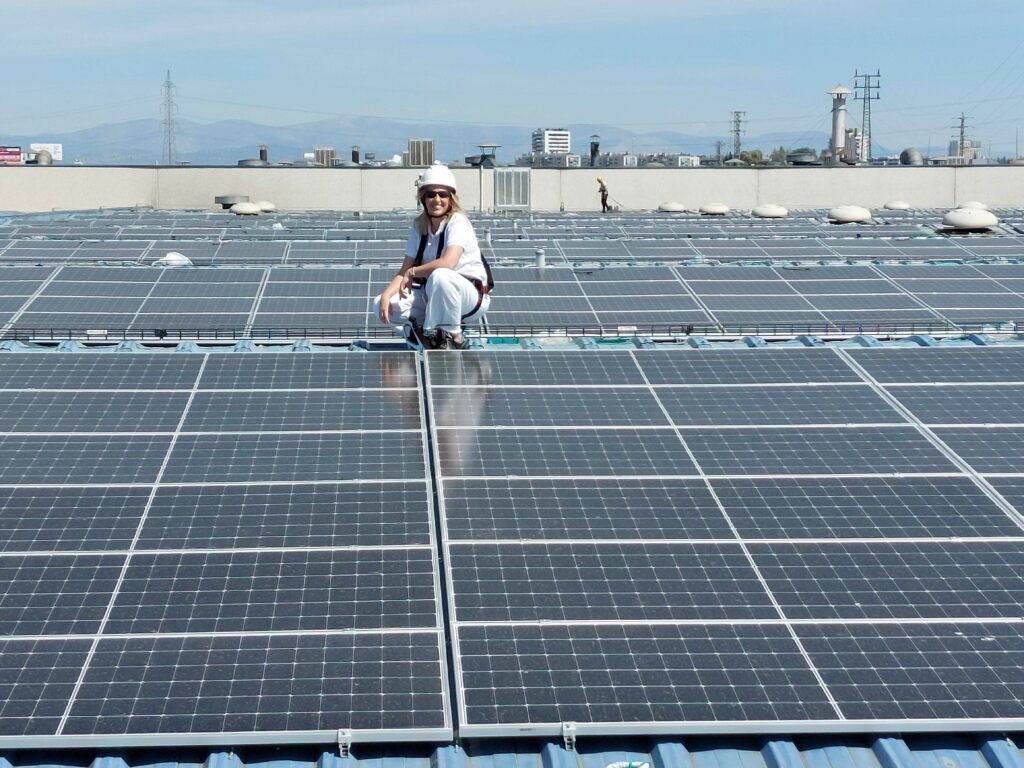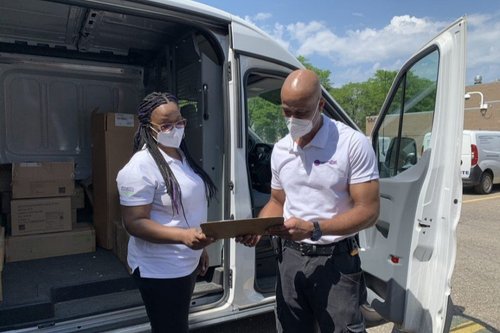Identifying Opportunities for Improved Efficiencies

The Energy Alliance Group of North America focuses on helping businesses implement sustainable energy solutions by identifying opportunities for improved efficiency and connecting clients to funding and technology. Based in Ann Arbor, Michigan, the company collaborates with commercial and industrial property managers to reduce energy consumption, enhance operations, and achieve long-term cost savings. SBN Detroit interviewed Scott Ringlein, founder, principal, and Chief Strategy Officer, about energy efficiency in Southeast Michigan, the role of financing and audits, and the importance of long-term thinking when it comes to sustainability. Q: What are the biggest energy efficiency challenges facing commercial and industrial buildings in Southeast Michigan? A: Misinformation is one of the biggest challenges. Every building has the opportunity to implement energy efficiency improvements, and there is money available to make it happen. These improvements offer a return on investment, but many building operators and owners either don’t believe the numbers or assume they don’t apply to them. The truth is, utility costs are ongoing and only getting higher, so the only way to gain control is to improve your building’s efficiency. Q: How can businesses identify when it’s time to upgrade or retrofit their energy systems A: Start by knowing what you have—what systems are in place, their expected lifespan, and their maintenance history. If you’re seeing frequent repairs and higher maintenance costs, it’s time to look at alternatives. Then evaluate how much more efficient a new system could be and what kind of energy savings it could deliver. If the numbers make sense, that’s the signal to move forward. Unfortunately, many businesses struggle with that last step—deciding to invest. Q: What misconceptions do you commonly encounter around cost recovery or energy savings? A: Many building owners don’t believe the projections—even when we show them data that supports a positive cash flow within one or two years. They tend to focus solely on ROI and forget that utilities never go away. You’re always going to pay for water, electricity, gas—whatever it is. And the utility companies have no vested interest in lowering your costs. So even if you’re skeptical, you’re still going to be paying more year after year unless you act. Q: How has the financing landscape changed for energy upgrades—especially for nonprofits or small businesses? A: We’ve been in this space since 2012, and the financing options today are better than they’ve ever been. Tax credits will come and go, but there are more long-term tools now than there were a decade ago. Michigan has been a leader in this area. Programs like Michigan Saves were the first of their kind in the U.S. We’re also a state approved for Property Assessed Clean Energy (PACE) financing, although it’s underutilized here compared to states like California. Still, the options are out there—you have choices, and you can take control. Q: What role do energy audits play in long-term planning, and how often should they be conducted? A: Audits are essential. You need to know where you stand—what equipment you have, how efficient it is, and what condition it’s in. It’s surprising how many clients have never even been on their own roof, where all the major equipment is housed. There are different levels of audits. A Level 1 audit gives you a basic understanding of what you have and where you’re spending your money. A Level 3 audit goes deeper and is useful when you’re preparing to make major decisions—like process changes or equipment replacement. A challenge is that many companies don’t take the time for a comprehensive audit until it’s too late. Smaller organizations may lack the staff, and larger ones may lose visibility due to scale. But without that baseline, long-term planning is difficult. Q: How do Southeast Michigan’s climate swings shape energy strategy in the region? A: As an organization, we don’t use climate change as the primary argument for doing the right thing. Climate change is happening, but we believe the conversation around energy efficiency should be happening regardless. You’re spending money on utilities – and there are better systems and more efficient ways to operate. We also need to think long-term. In the U.S., we don’t treat these upgrades as long-term investments the way they do in Europe or Asia. There, the systems are central to the building’s value and are maintained accordingly. Here, we often focus too much on short-term costs instead of building for performance and sustainability. Q: What advice do you have for businesses looking to reduce costs and improve operations going forward? A: Real-time monitoring of building systems from a central location gives you visibility and control. Beyond that, the cost of implementing technologies like LED lighting, heat pumps, solar panels, and combined heat and power (CHP) systems has become very feasible. There are also integrated systems now—solar light poles with battery storage and surveillance, for example—that operate independently of utility companies. The key is maintenance. These systems don’t last forever if they’re neglected. But with built-in monitoring and upkeep, they can be powerful tools for cutting costs and improving resilience. Be sure to subscribe to our newsletter for regular updates on sustainable business practices in and around Detroit.
Rethinking Thermal Energy in Commercial Buildings

PowerPanel, headquartered in Oxford, focuses on sustainable energy technology with a particular emphasis on hot water systems and thermal energy capture. The company designs and manufactures modular solar hybrid systems that integrate both photovoltaic and thermal components into a single unit. Its goal is to offer energy solutions that are more efficient, durable, and economically viable for a range of commercial and industrial applications. SBN Detroit interviewed Garth Schultz, founder and president, and Oliver Buechse, who leads strategy and organizational development, about energy planning, misconceptions around renewables, and how Michigan’s engineering legacy could help shape the future of sustainability. Q: What is the impetus behind PowerPanel—what are you looking to achieve? Garth Schultz: Our work is driven by two goals – decarbonization and energy savings. We’ve developed a photovoltaic-thermal (PVT) module that combines solar electric and thermal capture in a single footprint. That means you can generate electricity while also capturing heat for domestic hot water or space heating, achieving a form of double decarbonization. We’ve paired that with a flexible hot water storage system. Water can store energy for long periods – up to 55 hours in some cases – so we’re using it as a thermal battery. The system allows for energy recovery from rooftop solar units or HVAC waste heat and redistributes it through a pump for heating needs. The components are designed for easy installation, using engineered foam and PVC linings. Oliver Buechse: By reimagining the infrastructure, we’ve been able to introduce solutions that are cost-effective, recyclable, and have longer life cycles. We’re focused on creating practical, adaptable tools for commercial facilities. Q: What are some of the most common misconceptions businesses have about adopting renewable energy, and how do these misunderstandings slow progress? Schultz: One major misconception is that renewable energy is always more expensive or only viable with significant incentives. In reality, for domestic hot water systems – especially in commercial settings – the return on investment can be very favorable. The payback period is often short, particularly when combined with existing energy efficiency measures. There’s also the belief that traditional systems are “good enough.” But if you compare life cycles, newer solutions like ours often last twice as long as standard replacements and provide better performance over time. Buechse: Another barrier is the perception that renewable adoption is driven by political pressure rather than economic value. When we talk to property owners or facilities managers, the conversation often shifts quickly once they understand the cost savings and operational advantages. Government incentives help reduce the upfront investment, but the benefits – lower utility bills, resilience, and future-proofing – stand on their own. Q: How has the conversation around energy efficiency evolved within Southeast Michigan businesses over the last decade? Schultz: There’s more awareness now. Internal sustainability mandates are common, even in sectors where they didn’t exist 10 or 15 years ago. Businesses are looking at practical ways to improve efficiency, not just for compliance, but because it aligns with their operational goals. Buechse: We’re also seeing a shift where architects and developers are integrating energy solutions from the start. They want buildings that are good for the environment and good for people. It’s not just about meeting code, it’s about delivering healthier, more sustainable spaces that people feel good about occupying. Q: When it comes to energy planning, how can businesses expand their thinking beyond electricity? What parts of the energy equation are often overlooked? Schultz: Thermal energy is often underappreciated. If you look at the average building, around 85% of total energy use goes to heating, cooling, and hot water, not electricity. But we rarely evaluate that side of the equation as thoroughly. Buechse: There’s also a broader awareness now that utility bills don’t reflect the full cost of energy. Natural disasters, insurance premiums, environmental degradation – those costs are externalized. More people are recognizing that energy efficiency also means resilience and reduced long-term risk. Technologies like geothermal or air-source heat pumps are also gaining traction. The big shift we are working toward is using energy that’s already present in the environment – or being wasted – and recapturing it. Q: In a state like Michigan, what makes energy strategy particularly challenging or unique? Schultz: Michigan has a heating-dominant climate. That creates challenges, but it also opens opportunities. In summer, a PVT (photovoltaic) unit produces both peak solar electricity and peak thermal output. That surplus energy can be stored and used later to replenish geothermal systems or supplement heating needs during the cold months. It’s about layering different technologies together—solar, thermal storage, geothermal—to create a more flexible and reliable energy strategy. Q: What trends are you seeing among commercial and industrial businesses rethinking sustainability and energy use? Buechse: It goes back to integration. For example, hospitals need to cool their operating rooms, and they also need hot water for sterilization. If these things happen on completely different systems it’s inefficient and costly. But if you can tie them together, taking energy out of the operating room and using that same energy to heat another area or make hot water you become much more efficient. We’ve worked with breweries where waste heat from tank cleaning is now being reused within the process. That reduces overall energy demand and cuts operating costs. The best part? Many of these upgrades can be implemented as retrofits. They don’t require a complete rebuild, and they create local jobs in plumbing, HVAC, and construction. Q: What role can Michigan businesses play in shaping national or global conversations around sustainable energy? Schultz: Michigan’s manufacturing legacy is a huge asset. The expertise in design, tooling, and production, especially from the auto industry, gives us a unique advantage when it comes to developing and scaling new technologies. Buechse: There’s also a mindset here around solving problems and making things work. We don’t need to compete head-to-head with global solar manufacturers on commodity products. Instead, we can offer solutions with additional value—like thermal capture and storage—and use that to differentiate ourselves. The
Martinrea: Balancing Growth with Energy and Waste Reduction Goals

With over 19,000 employees working in 56 manufacturing, engineering, and technical centers in over 10 countries, Martinrea International is a global auto parts manufacturer focused on the design and development of lightweight structures and propulsion systems. Its sustainability goal is to operate in a socially responsible and ethical manner centered around respect for the environment, laws, universal human rights, and communities around the world. SBN Detroit spoke with Rachel Handbury, director of sustainability, to find out more about the company’s approach and execution. Q: How do you approach sustainability at Martinrea? A: Martinrea views sustainability as a holistic approach that encompasses both people and the planet. Our vision is to make lives better by being the best supplier we can be in the products we make and the services we provide. One of our ten guiding principles is to ultimately “leave It better.” Q: How is sustainability organized internally? A: There are a lot of different layers within Martinrea to achieve sustainability. It is embedded throughout the company from leadership to the manufacturing plants. We have a Sustainability Steering Committee, and the group holds quarterly meetings. This is led by our CEO, and his presence in the meetings drives the importance. We have a strong team working constantly on sustainability that meets weekly. This involves a sustainability lead from each of our four business units (Aluminum, Metallics, Flexible Manufacturing Group (FMG) and Fluids). We review each business unit’s sustainability targets, initiatives, and implementation. As you can imagine, each group drives their sustainability priorities slightly differently due to their different manufacturing processes. Q: In around 2019/2020, Martinrea hired a third-party consultant to assist with the sustainability strategy. How did that work? A: Martinrea utilized this consultant team to perform an internal materiality assessment, identify our stakeholders, and propose a sustainability strategy, which I was hired to manage. We then developed the business unit sustainability lead team and the Sustainability Steering Committee – the management structure needed to implement the sustainability strategy. Q: How do you get employees involved in sustainability? A: We do this in multiple ways. Education is key. The more our employees know about sustainability and how Martinrea supports sustainability, the more they want to incorporate it at work and in their homes. The fact that our leadership is on board is very important. It’s embedded from the top down and vice versa. Sustainability is also part of our internal business plan. We have implemented sustainability scorecards for the manufacturing plants and within each business unit, so everyone has clear sustainability targets they are looking to achieve. We also give out an annual ‘Leave it Better’ award to a plant that is excelling in all aspects of sustainability. The purpose is both to highlight the work being done and to foster involvement. The added benefit is that the winning plant inspires others to do similar work in their plant. Q: What are your short-term goals for 2024? A: We have a year-over-year goal of a 3% reduction in energy intensity (energy consumption relative to sales) in all operations. We also have a year-over-year absolute carbon reduction goal of 3%. This year we added internal water reduction goals, and we are working to reduce water consumption focusing on the plants located in high-water risk areas and plants that have the highest water usage. Q: What are your longer-term goals? A: 35% reduction in absolute carbon by 2035 without carbon credits, and we strive for every manufacturing plant to be zero landfill. Q: What are your biggest challenges? A: We are a growing company, so as our production increases, we have to balance that with continuing to achieve our reduction goals. Q: What are the biggest opportunities? A: Sustainability is very important to our customers and communities. We are an authentic company achieving our sustainability goals through energy efficiency and giving back to the communities in which we work and live. Our approach to sustainability provides a competitive advantage since our customers want to work with sustainable suppliers. Q: How are your suppliers vetted when it comes to sustainability? A: Suppliers are a big focus for us right now. Just as our customers view us as partners in sustainability, we also view our suppliers as partners. We have sustainability embedded in our supplier assessments and our supplier code of conduct. We are also providing more education to our suppliers so that they understand why it’s important to us and also to them. Some of our suppliers are in the early stages of sustainability and we can help to pull them along on this sustainability journey. Q: In 2022, Martinrea set a goal to reduce carbon emissions by 35% by 2035. How will you get there? A: It’s a multifaceted approach. But boiled down, we focus on reductions first. We need energy to produce parts, but we are looking at how we can use energy in the most efficient ways. The next stage is to look at renewable energy. In one of our plants in Spain, we just installed solar panels that provide 10% of the plant’s energy. Q: You have reduced carbon intensity by 19% since 2019 – how? A: This same strategy. We start with low-hanging fruit. There were significant reductions made by switching lighting to LED, simple changes in welding techniques, and more. It’s really about having eyes on the manufacturing process through the lens of sustainability and making changes. Q: What does the future look like? A: Following the strategy we’ve developed to push sustainability further each year, we will be utilizing innovation to accomplish energy and waste reductions, increasing efficiency, and then incorporating renewable energy, where possible. At Martinrea, it’s not about making broad claims, it’s about being authentic and digging deeper to see where we can make a difference, both for people and the planet. Be sure to subscribe to our newsletter for regular updates on sustainable business practices in and around Detroit.
Walker-Miller Energy is Working to Achieve an Equitable Clean Energy Economy

SBN Detroit interviewed Dr. Brandy Brown, Chief Innovation Officer of Walker-Miller Energy Services, a Detroit-based energy efficiency company focused on equity in the clean energy economy, on her role in guiding the development of advanced energy projects, workforce development, and equitable mobility solutions. Prior to joining Walker-Miller, Dr. Brown served as Climate & Energy Advisor within the Michigan Department of Environment, Great Lakes & Energy. Additionally, Dr. Brown serves as part of the Environmental Justice faculty for the University of Michigan’s School for Environment and Sustainability and as an appointee to Michigan’s National Resources Trust Fund Board. Q: You recently took on the position of Chief Innovation Officer at Walker-Miller, which is a new role for the company. What is involved in this? A: It’s so much fun I can’t believe I get paid to do it! Every day the work we are doing here is positively impacting the Walker-Miller team, the Detroit community, and beyond. Tangibly, this role comes with two main tenets; The first is thought leadership focused on the issues we need to overcome to achieve an equitable clean energy economy. This involves pushing topics and asking hard questions while coaching with love. It also involves asking folks to understand the impact of what they are doing so we don’t create the same inequalities that we’ve created for the last 100 years. It’s also about asking people to be cognizant of what structures exist now, what we are rolling out into the future, and thinking about the distribution, meaning will everyone benefit, and who’s going to bear any potential burdens? The second is talking to business leaders and people in the policy world to make sure that the new services being made available are inclusive and equitable for all. We constantly need to ask ourselves, does this product work in a home in a marginalized community? Also, are we talking to anyone in the communities themselves to share awareness of solutions coming down the pipeline? Often awareness is not being built at the time we are rolling out new solutions and technology, and that’s a misstep. I am actually a good example here. Fifteen years ago, I did not have the means to make changes to my home to increase its efficiency. But since I was working within the energy community I was aware of innovations and that awareness allowed me to plan and prepare my home for these changes. We need to intentionally communicate with all communities. Q: What immediate goals have you identified for Walker-Miller and what are you currently working on? A: I’m focused on the company internally and where I can provide support to the team and act as a bridge-builder to connect this team to my network. I’m following Carla Walker-Miller here, as she does this so naturally. I’m also working to identify impactful strategies we can roll out in the next year or two. To date, we’ve launched two. The first is Equitable Mobility Consulting. As electric vehicles become a more common mode of vehicular transportation, we are seeing more requests for EV infrastructure such as planning around where charging is going, and where vehicles may live. A lot of the work that follows falls in what I call prosperity zones where people can afford such things. We need to think about equity down the line. So, we’ve developed this consulting to point folks in the right direction when planning infrastructure. We are also involved in electric vehicle supply equipment (EVSE) installations and supporting communities on how to be intentional and mindful as they are planning. Second, we’ve created an Equitable Research and Consulting area of our business. This is an internal group that is operationalizing equity with energy efficiency programs and helping companies think about how to track and measure it. A big aha moment for us was realizing that equity is context-dependent. Meaning that it’s constantly changing, therefore we can’t just measure once. We have to listen to the community and their needs on a continuum because it’s fluid. Q: What are your longer-term goals at Walker-Miller? A: A large focus for us now and in the future is the equitable distribution of wealth creation. When we think of equity and the benefits of clean energy and clean energy transformation, we have to recognize that this shift is opening doors to wealth creation. And it’s difficult to ensure the equitable distribution of wealth creation. Walker Miller is approaching this by identifying business creation. Meaning that we are recruiting small and diverse businesses and giving them opportunities to become powerful in this space. This is very much a forward-thinking view. The steps we take now will reap great benefits ten years down the road. Q: What are other challenges you face? A: There is not enough time in a day. From sun up to sun down, there is so much to do and so many conversations to have. But that’s what makes it exciting. I think we have an opportunity in front of us to make a more concerted effort in working together. We can no longer look at our communities and think, this person will handle HVAC and this program will handle windows and that person will handle EV. We all have to be working together and we also all have to understand the process – what needs to be done first. You can give a home clean energy but if it’s not weatherized it’s an exercise in futility. Ben Dueweke, Walker-Miller’s Director of Community Partnerships is a master at this. He excels at setting up programs and the pipeline, getting residents fully weatherized, and then getting them into more clean energy. We are focusing on a few houses and a few blocks at a time with the goal to ultimately transform the city. Q: What drives your passion here? A: When I had my first child, and then my second, and then became a single mother with limited income and was faced with getting my life


